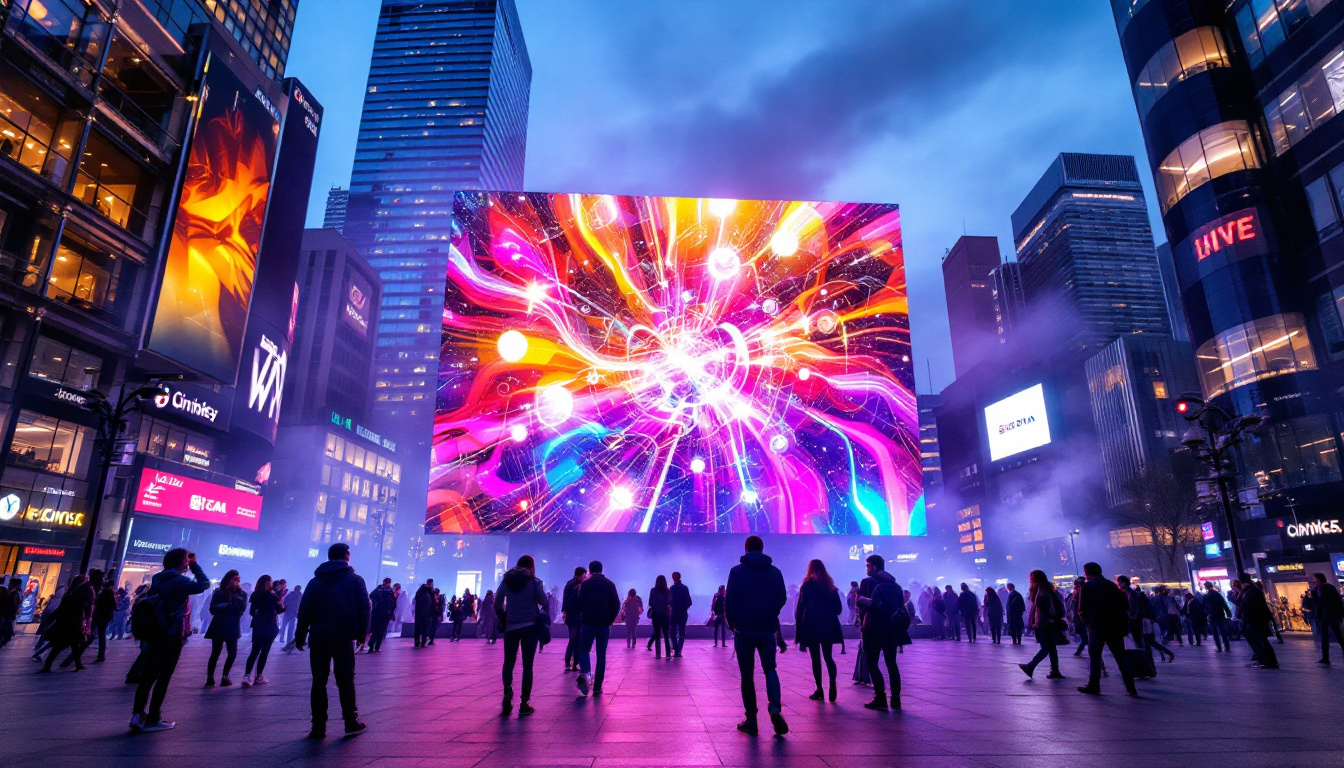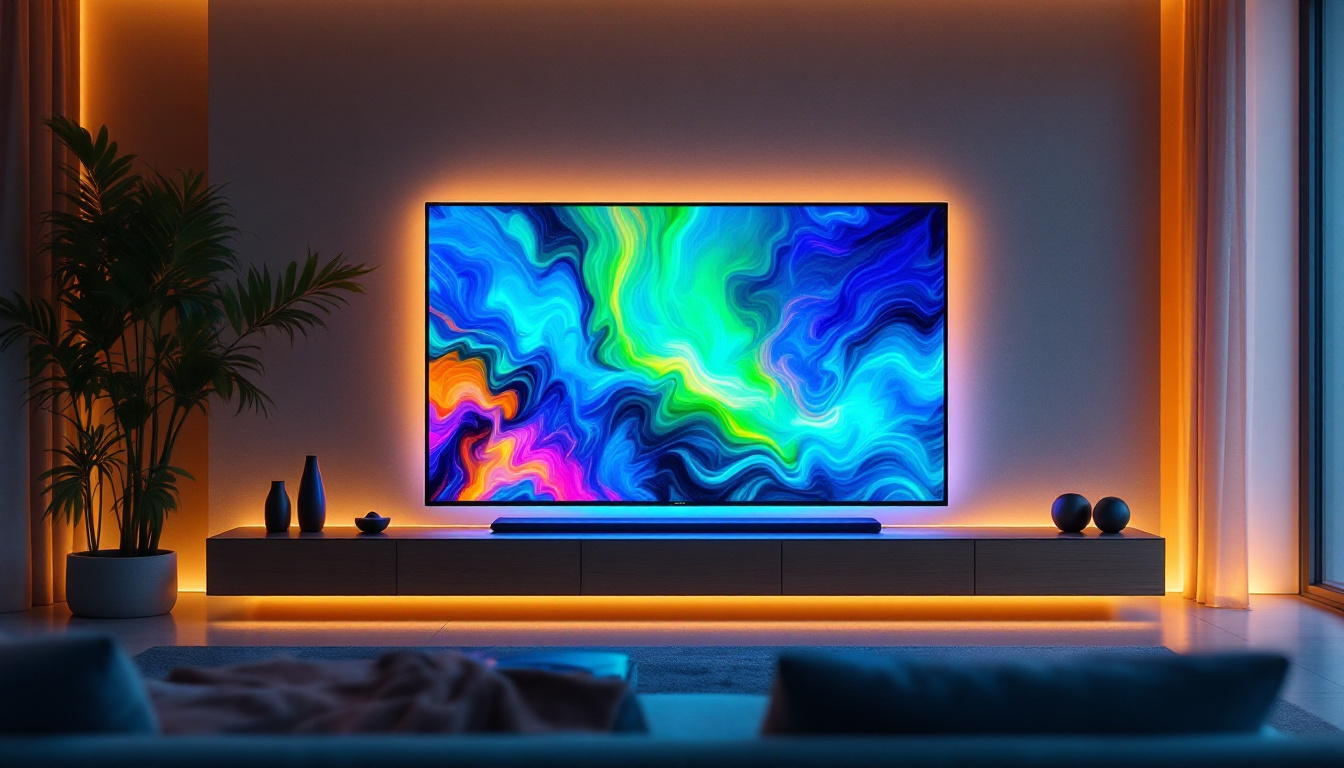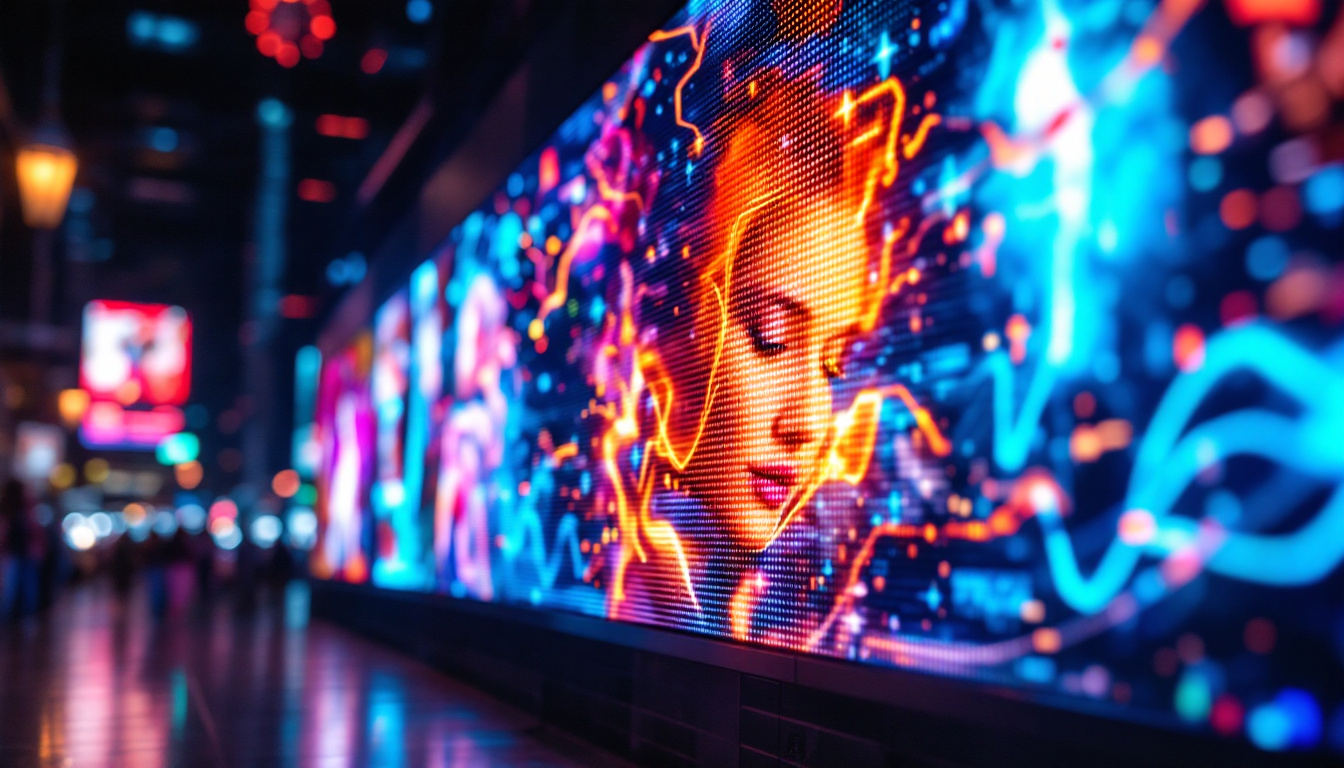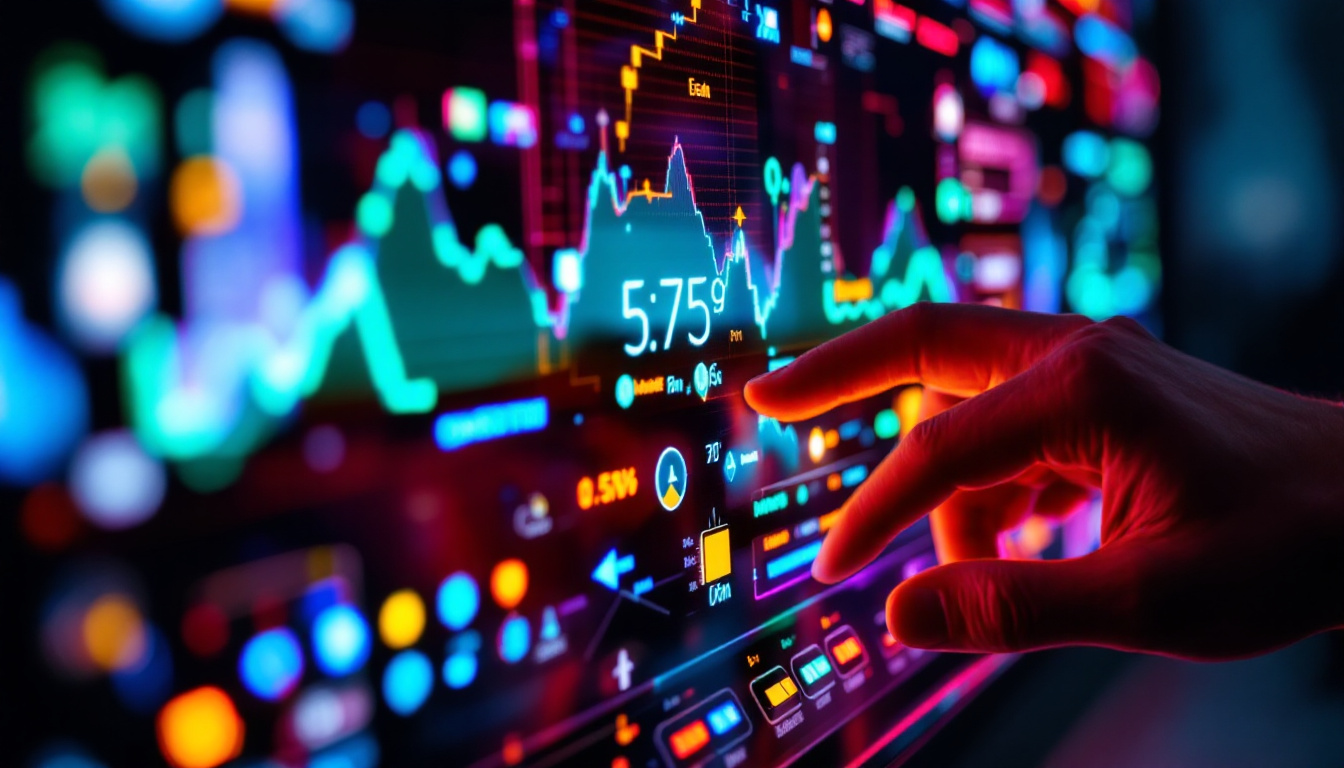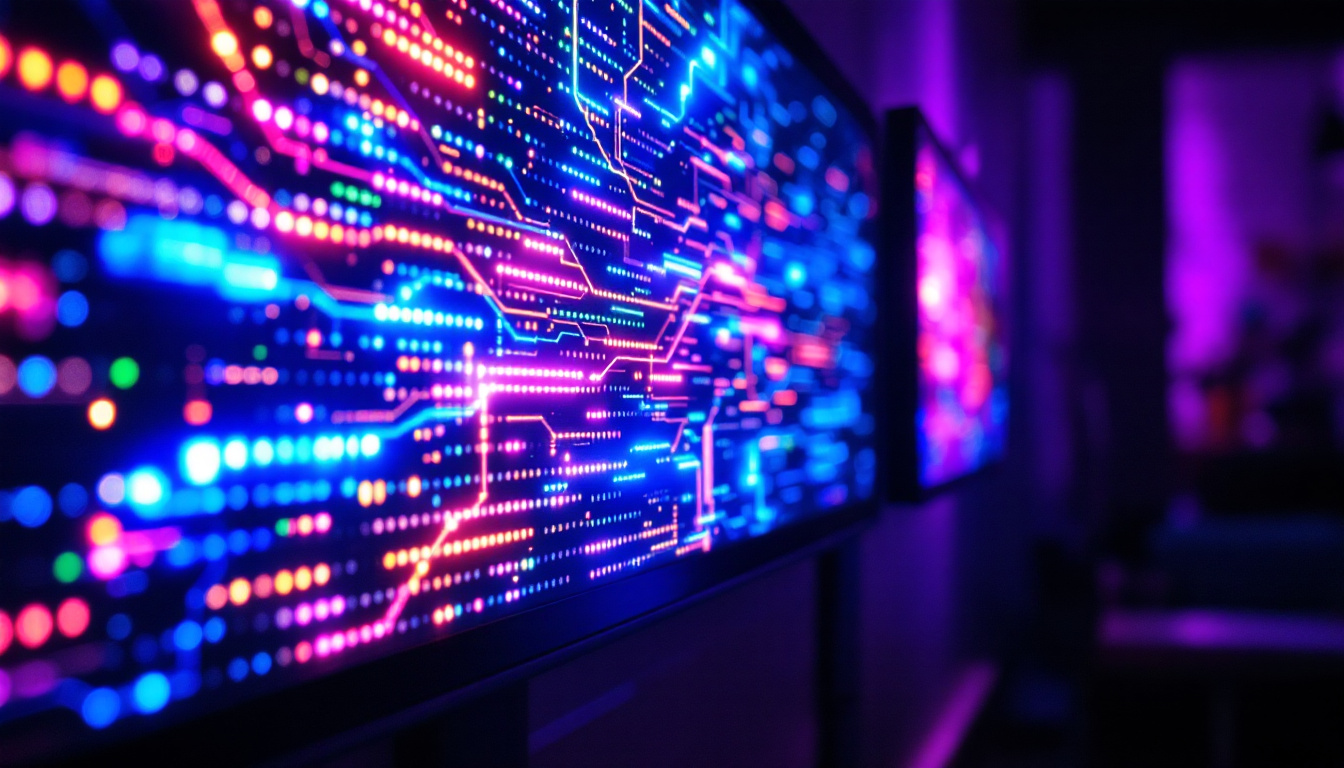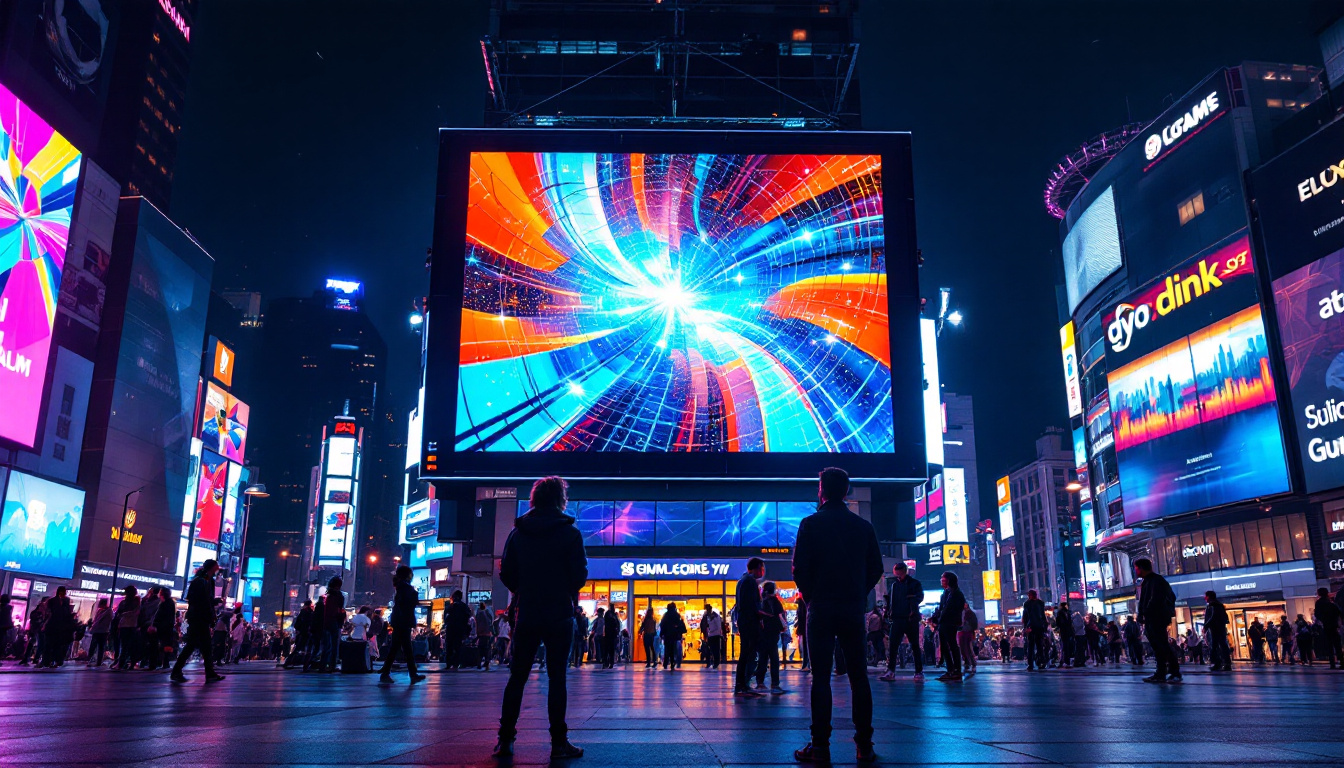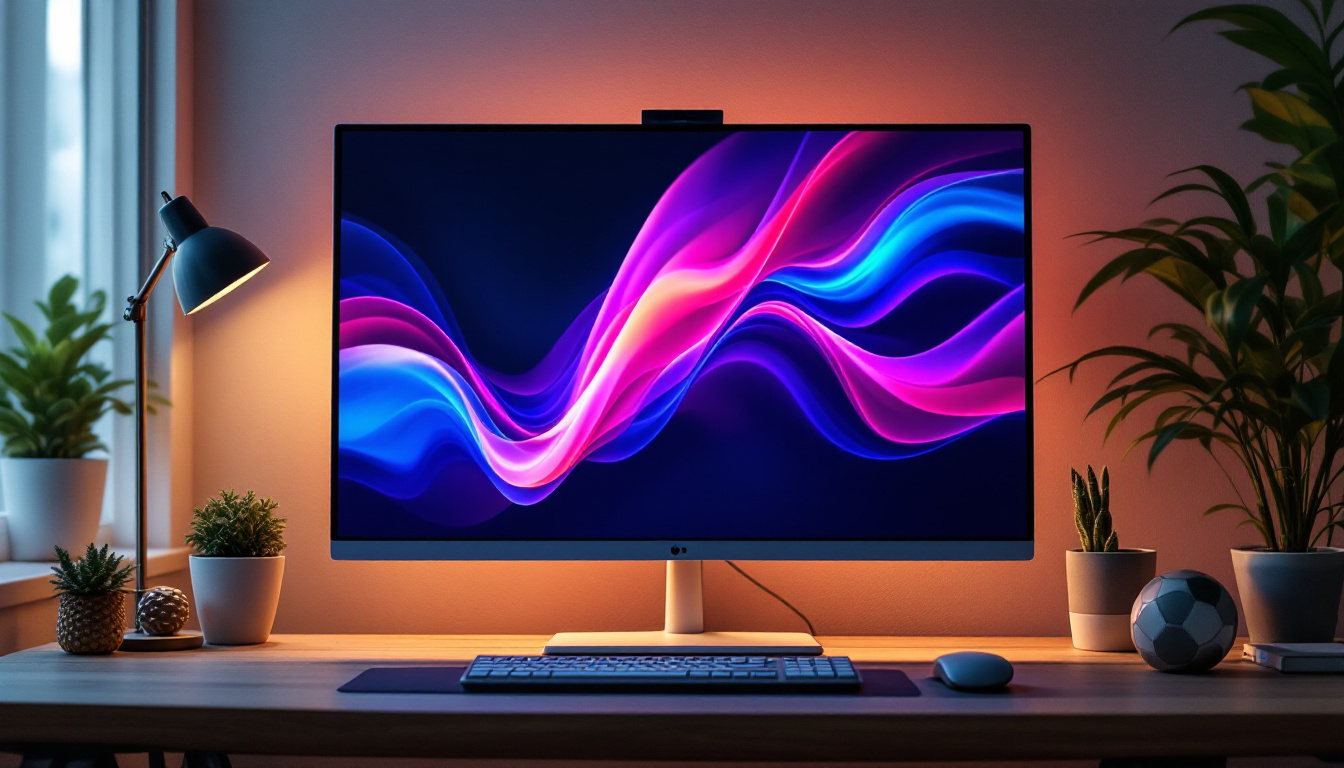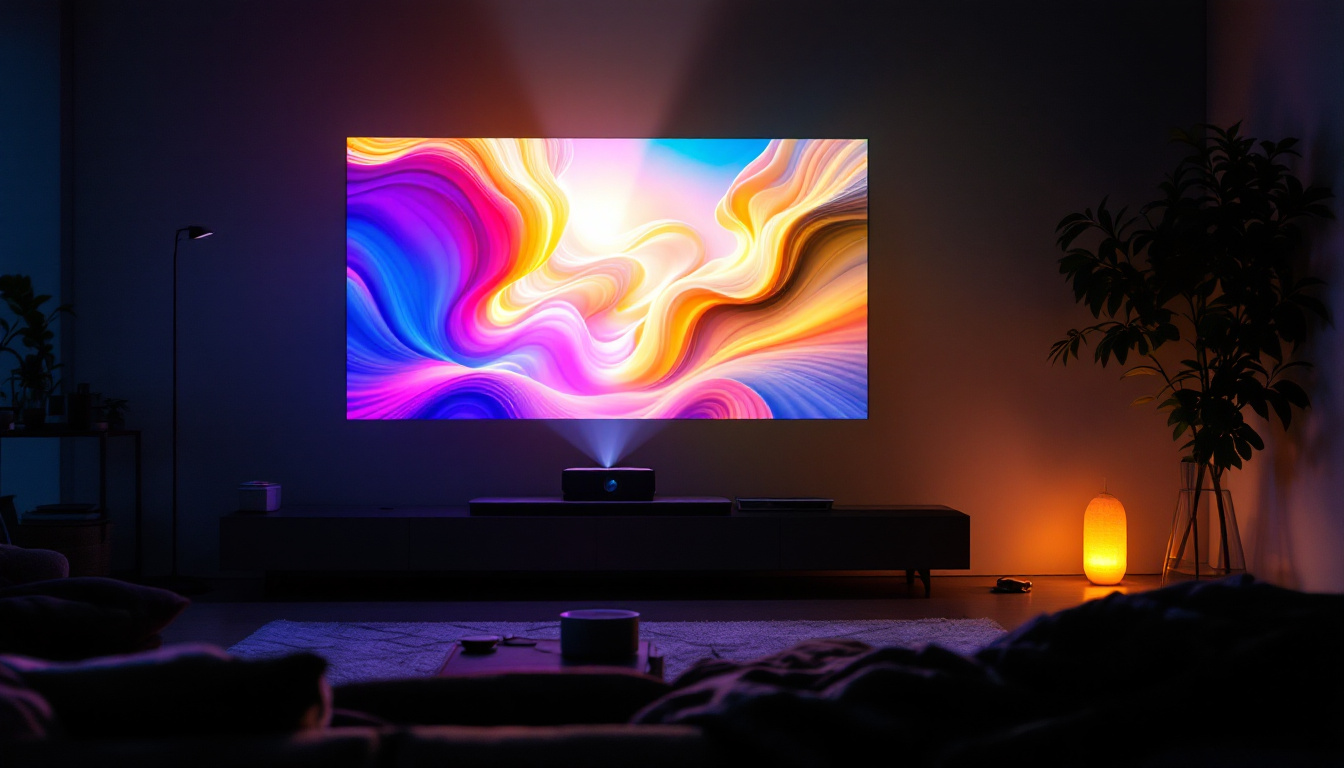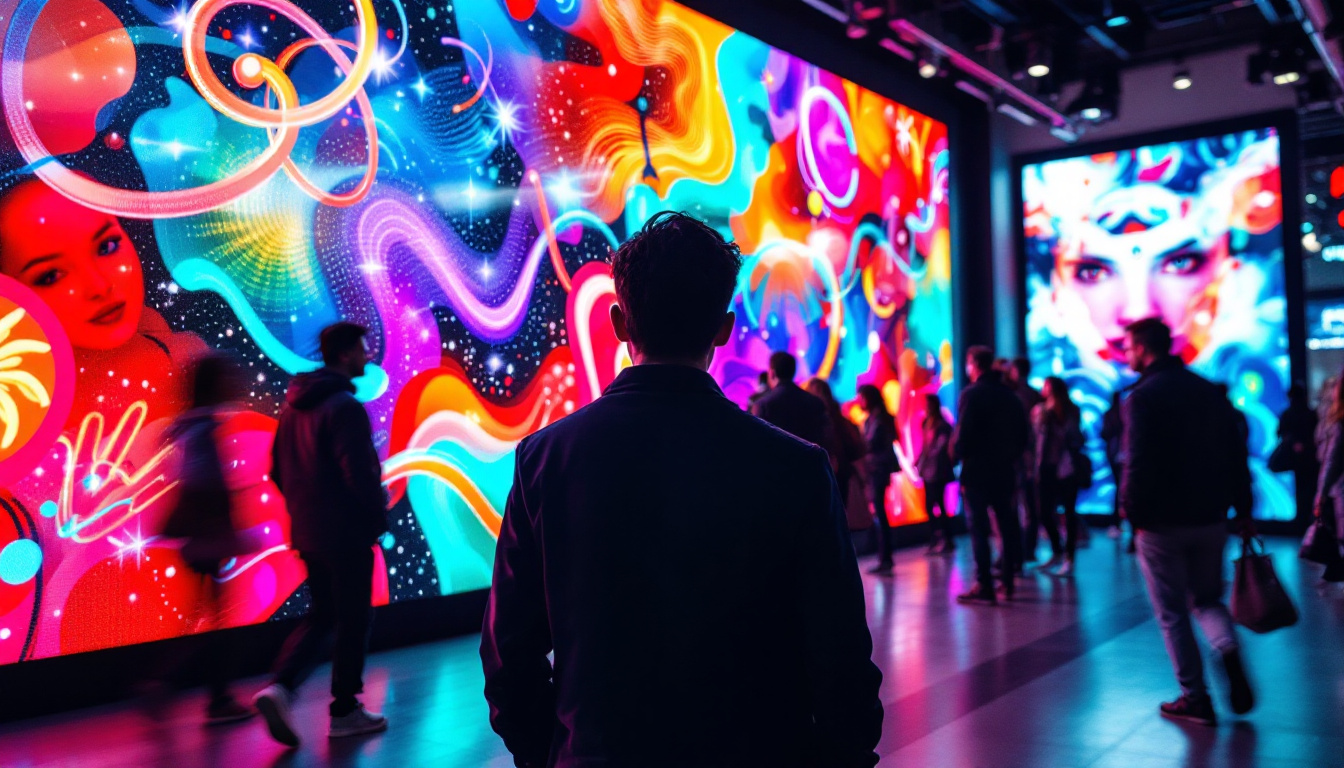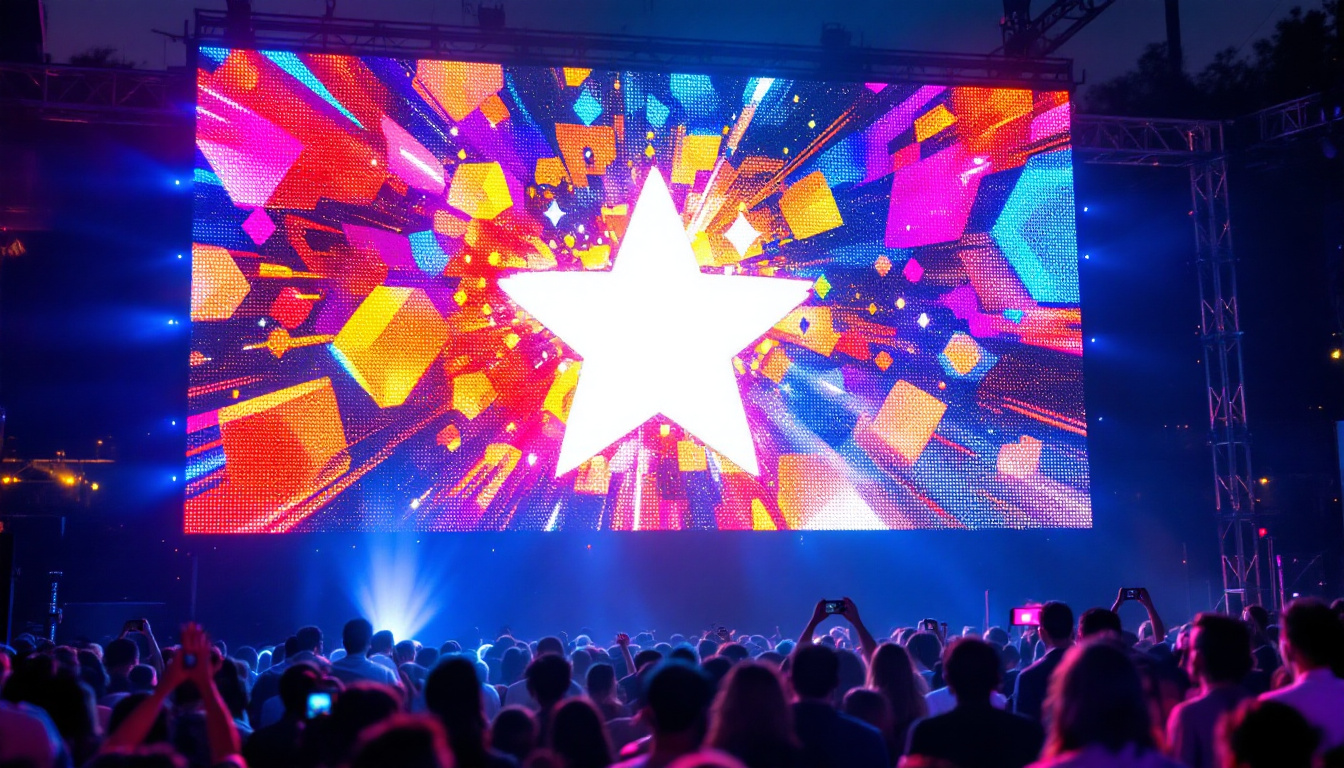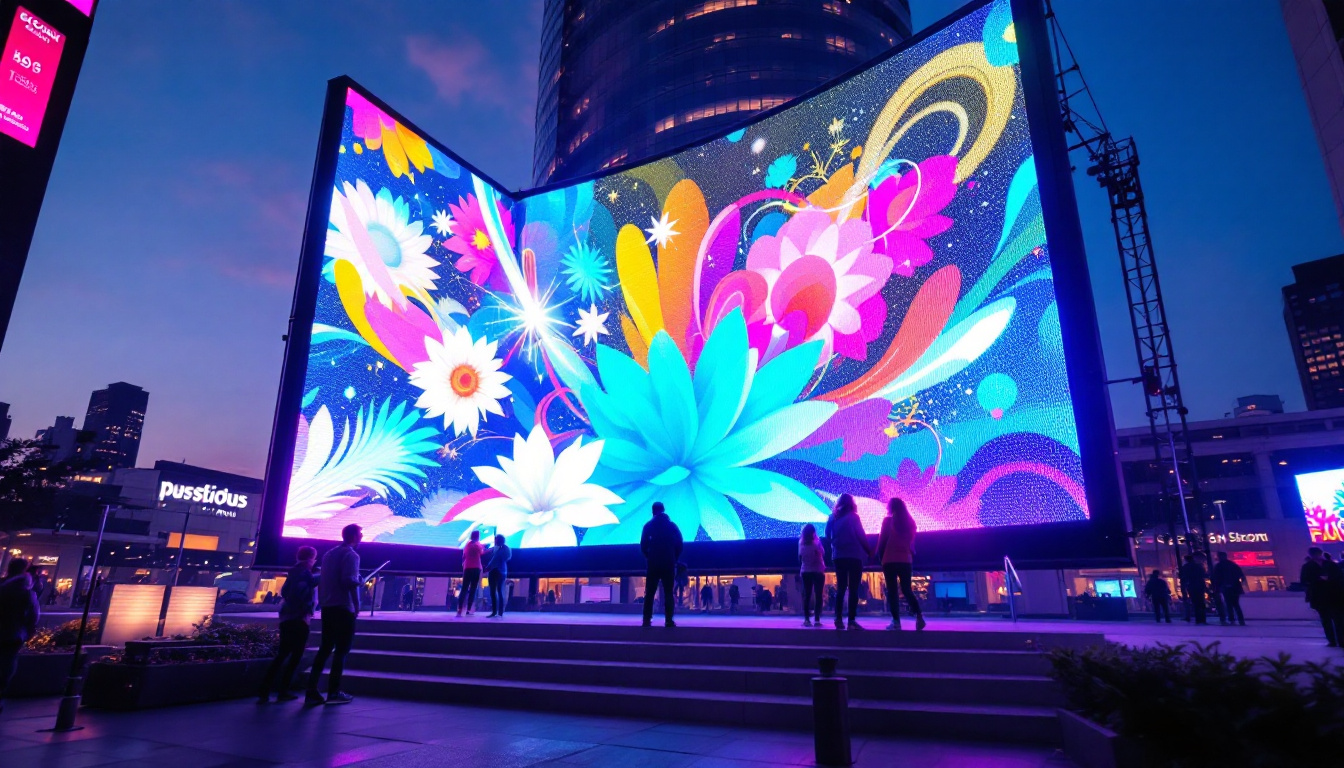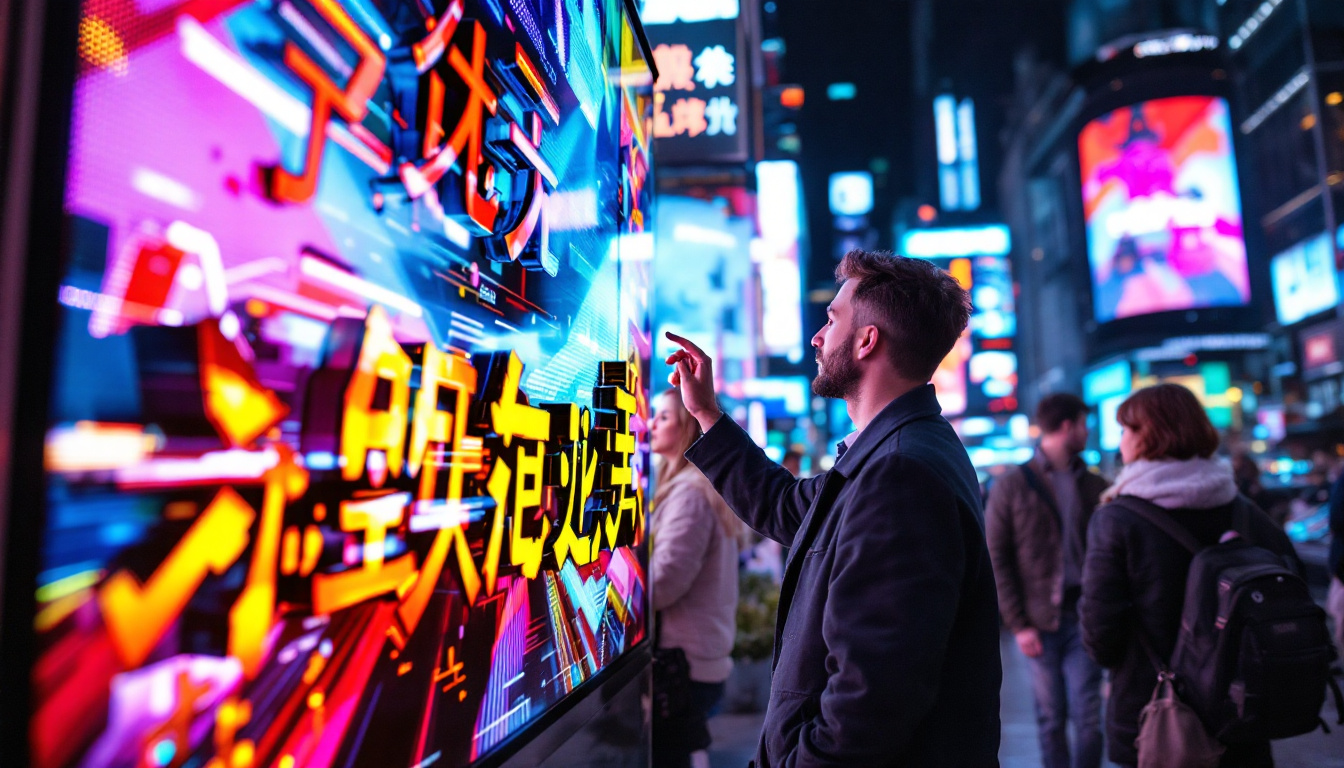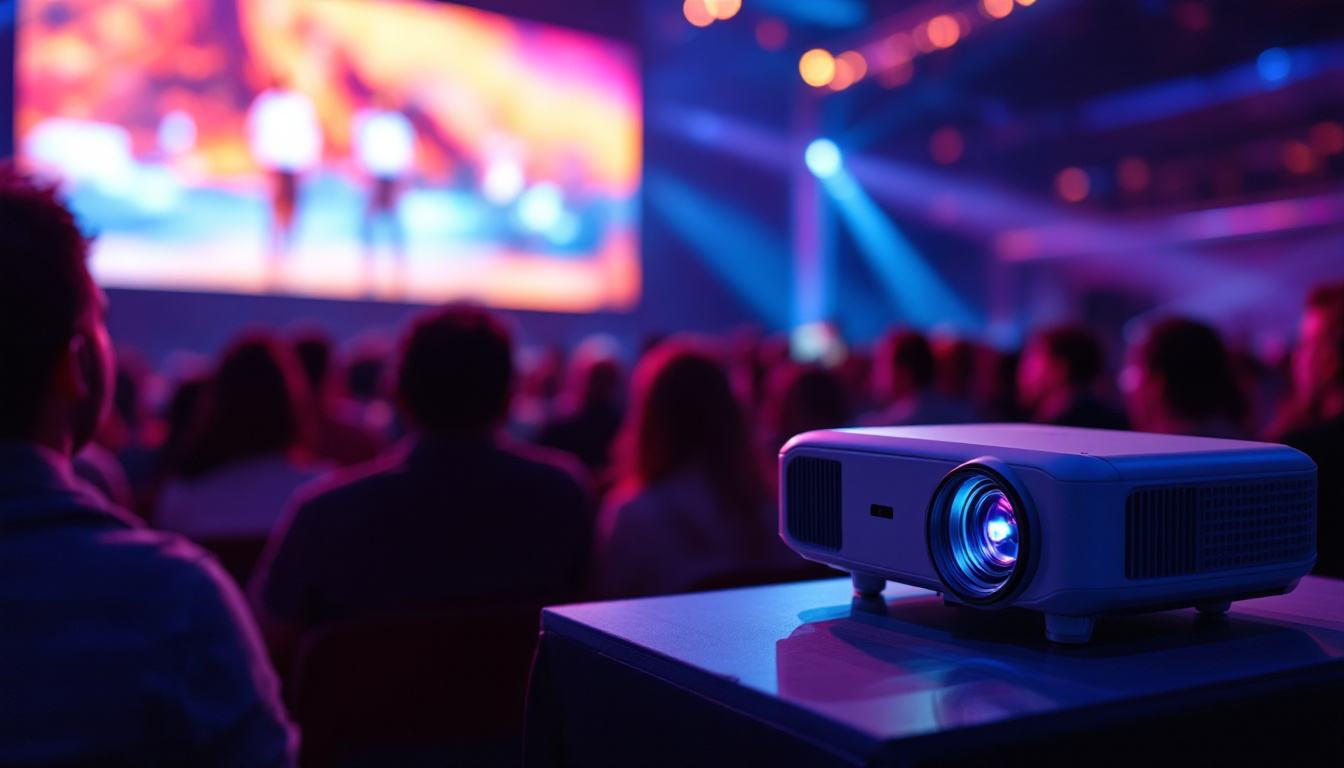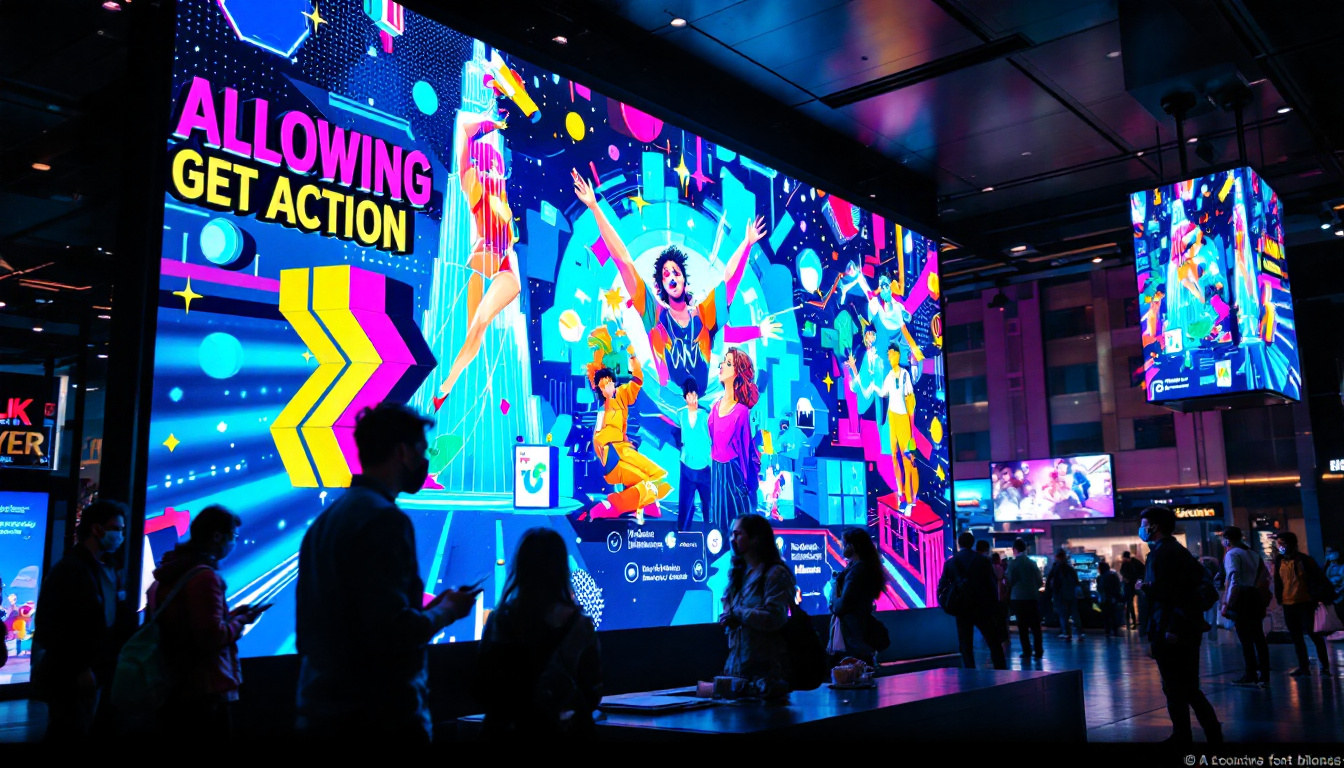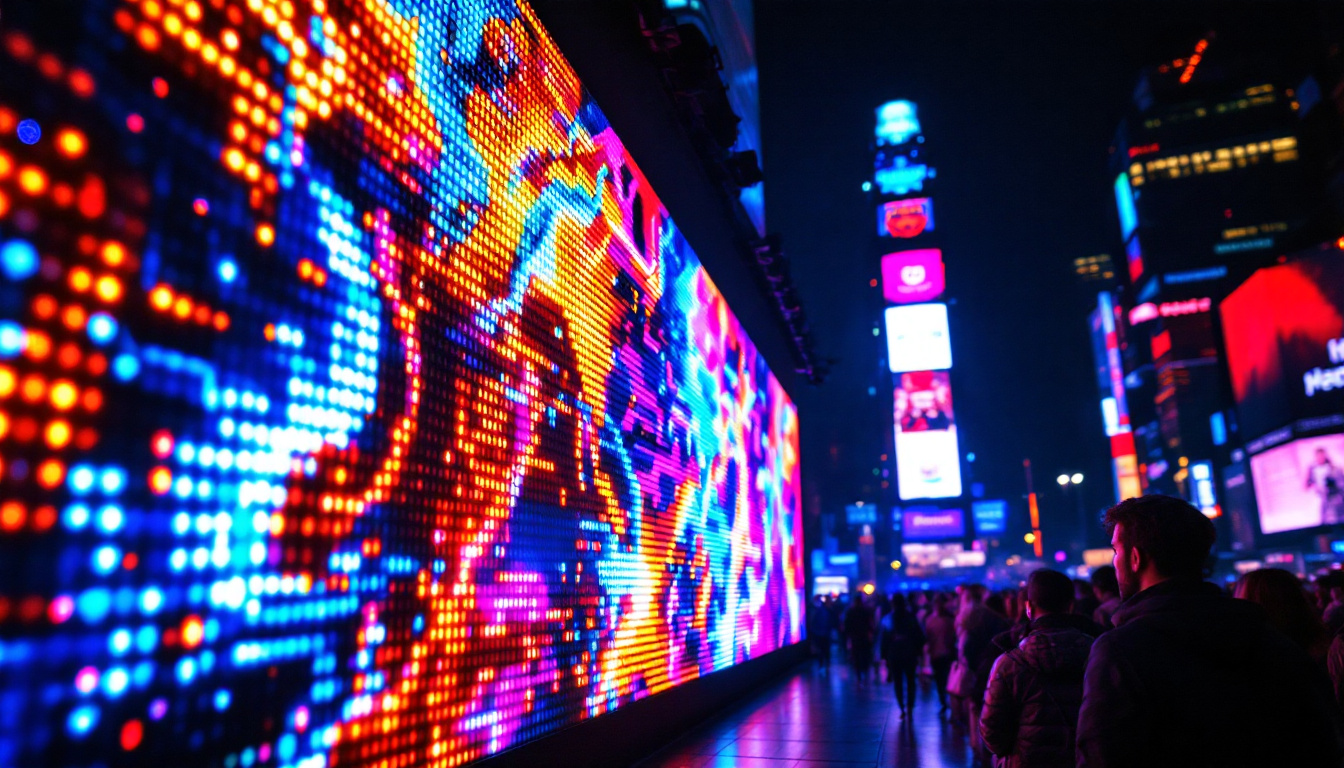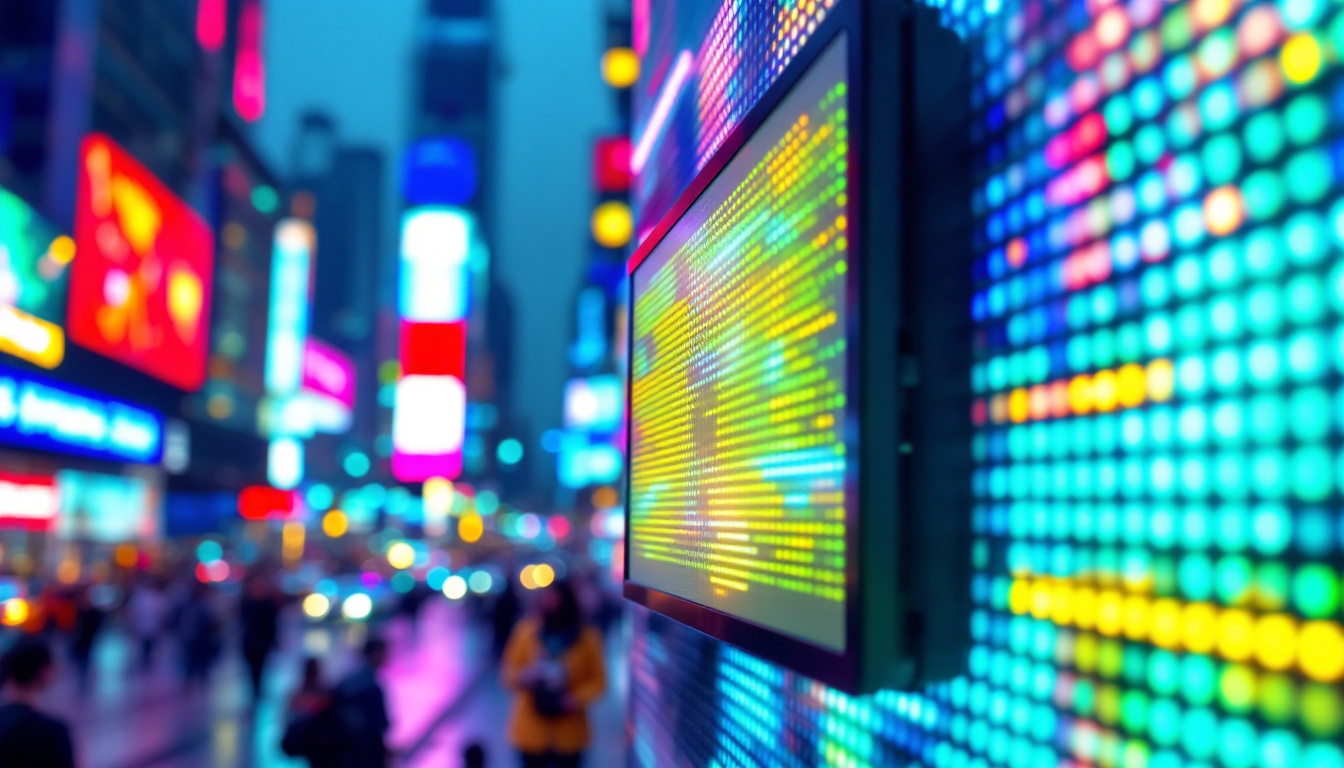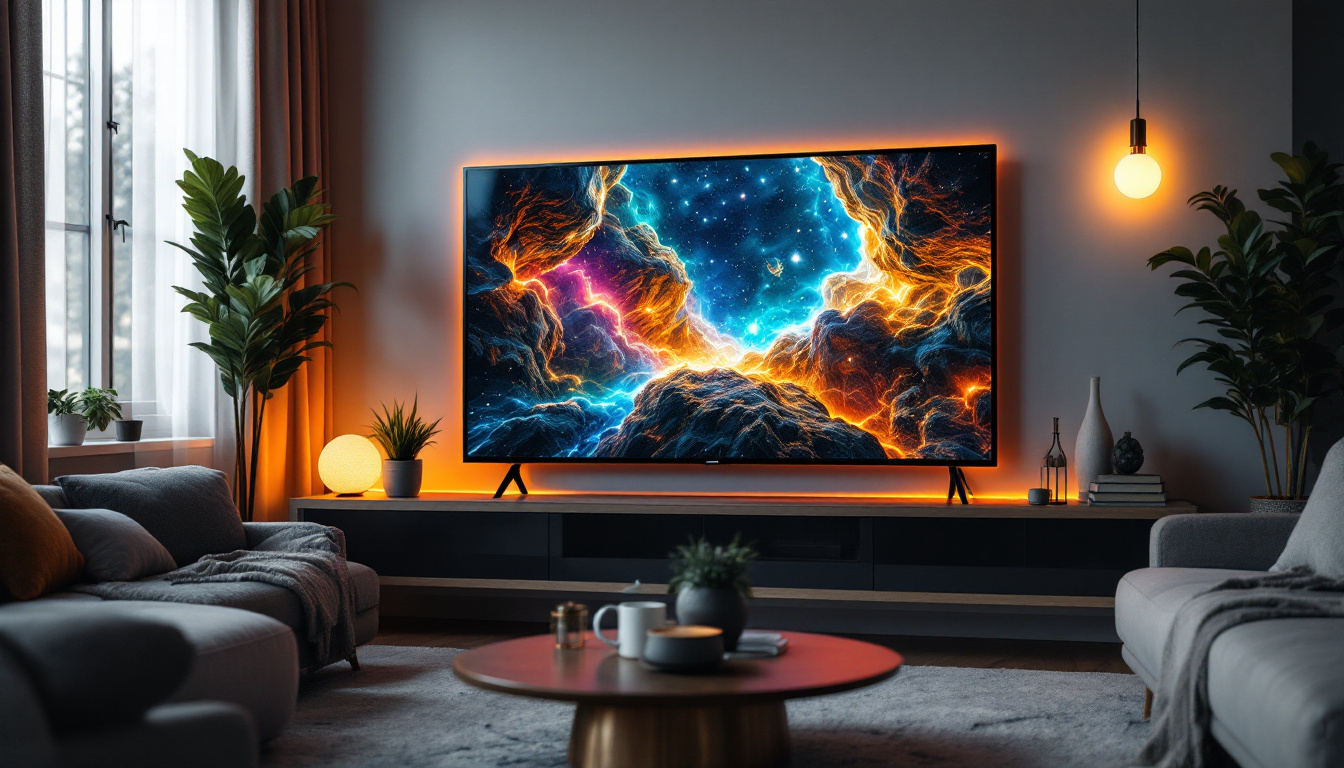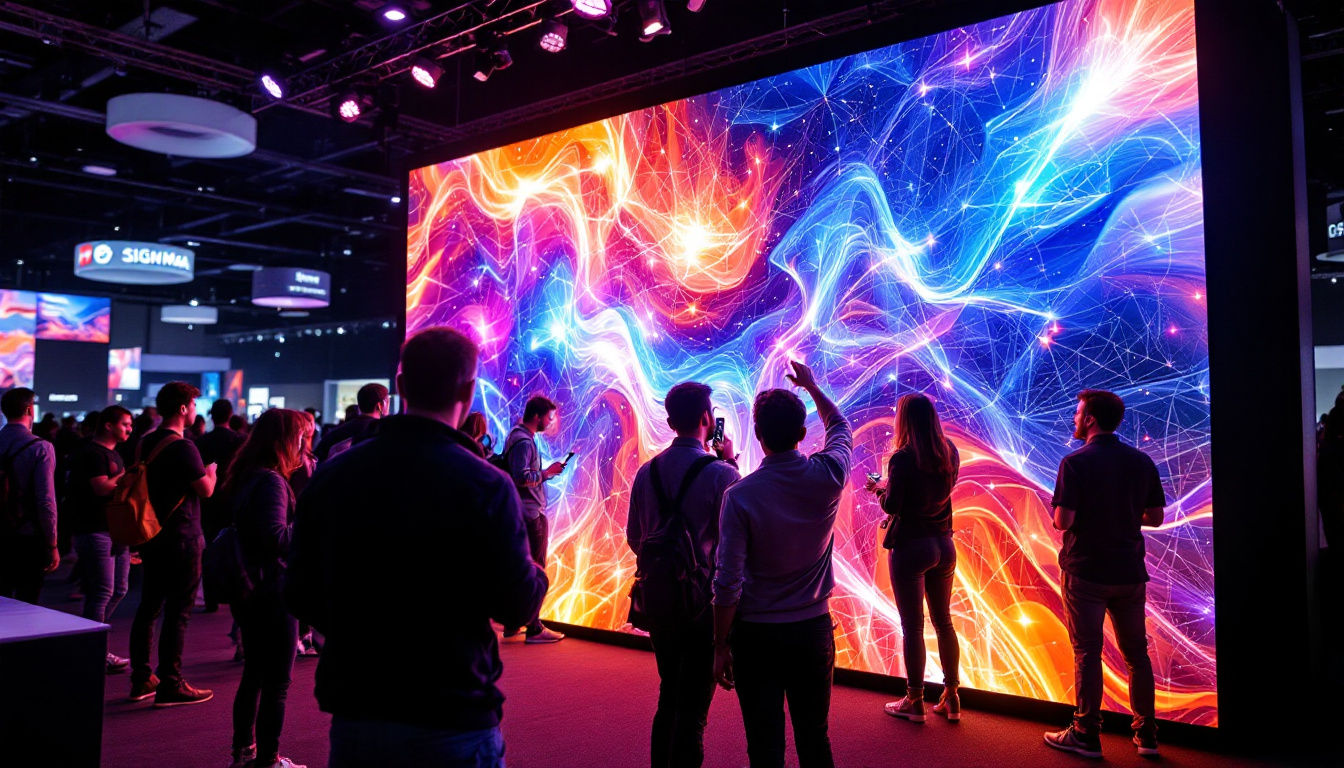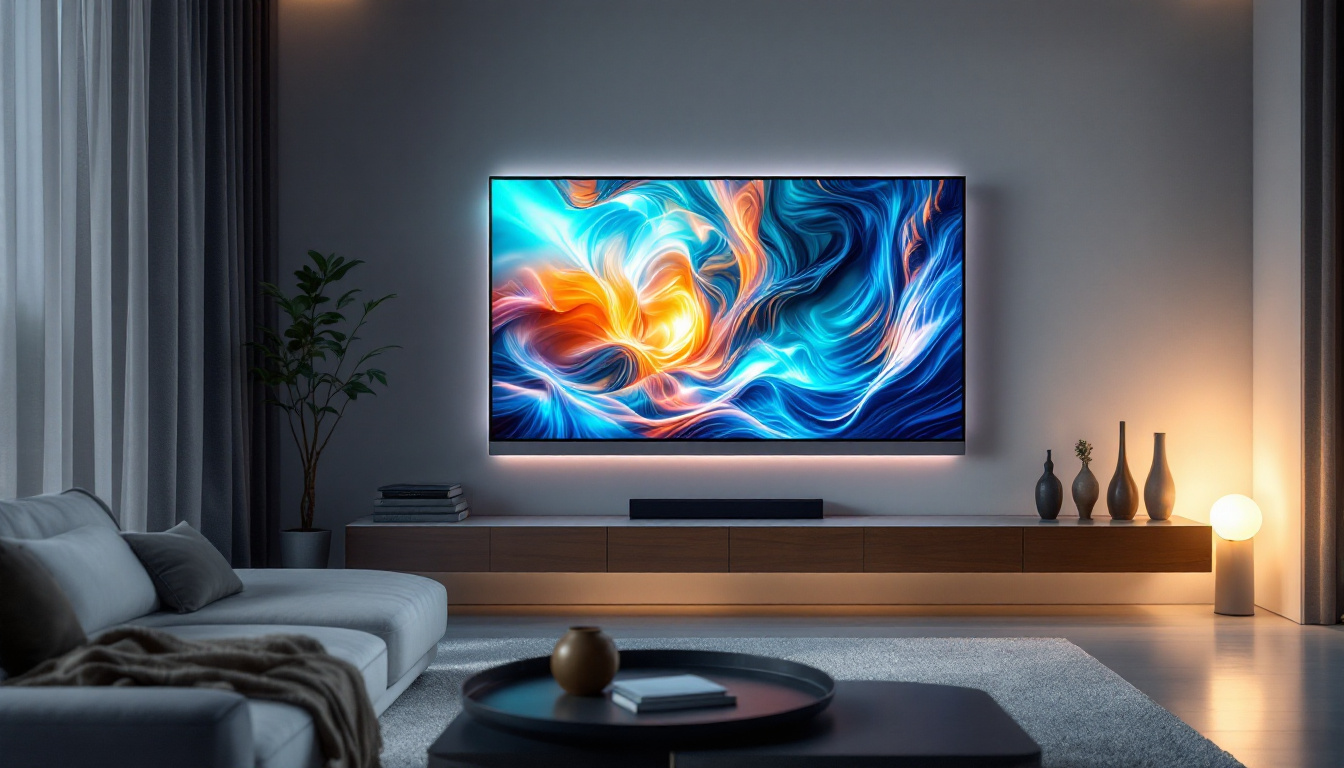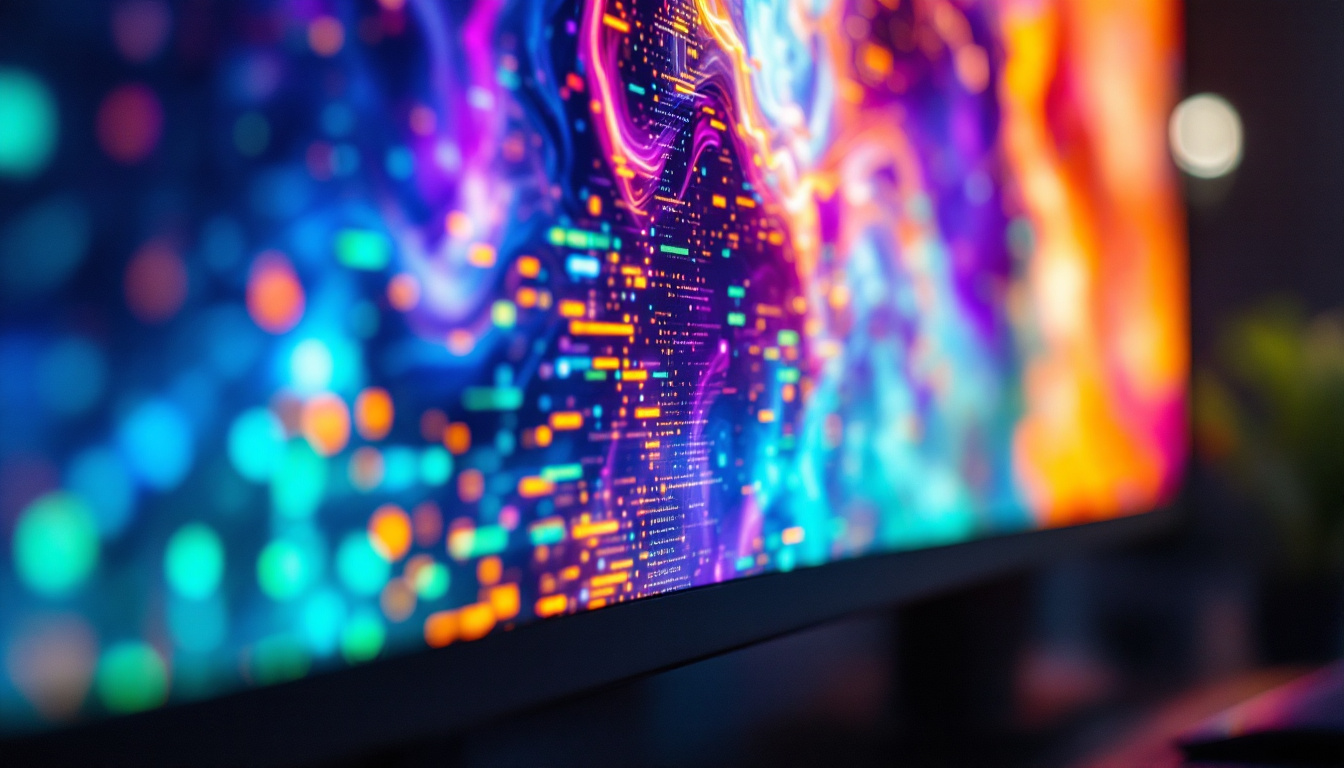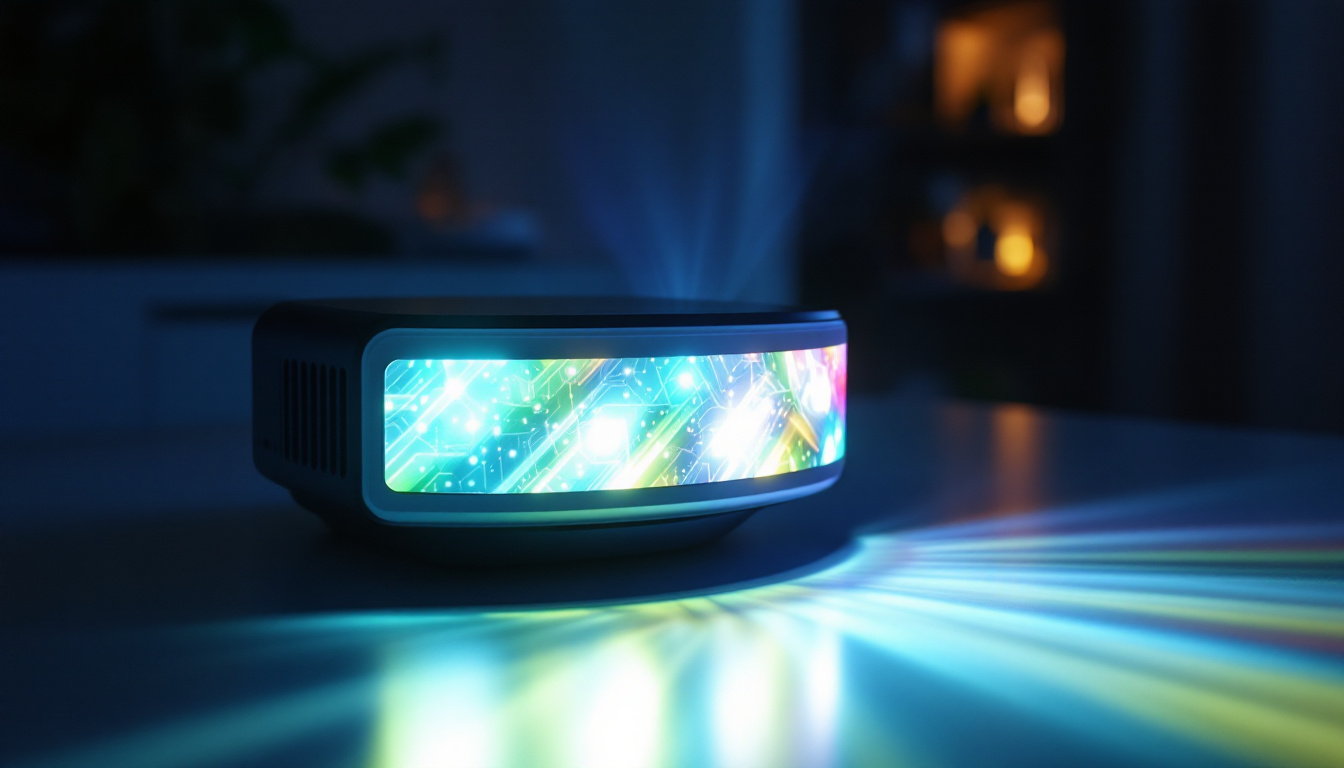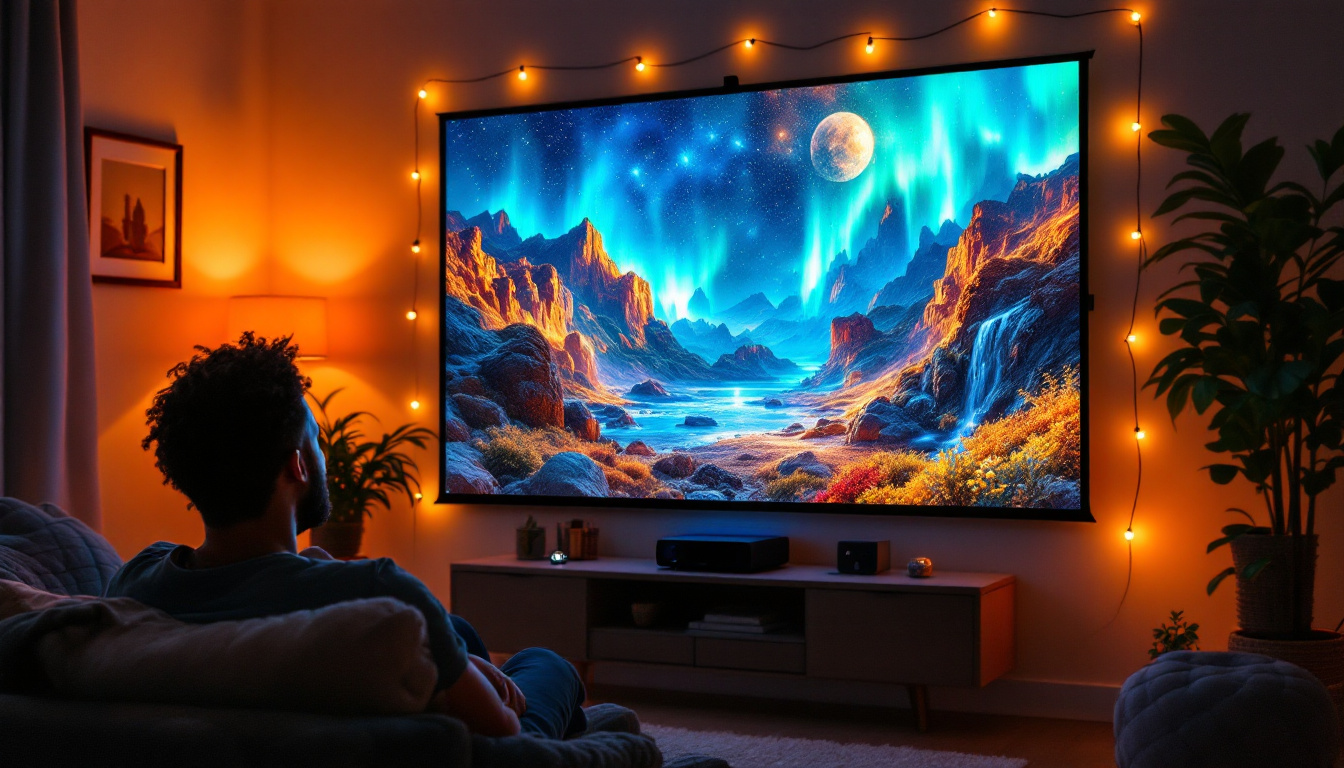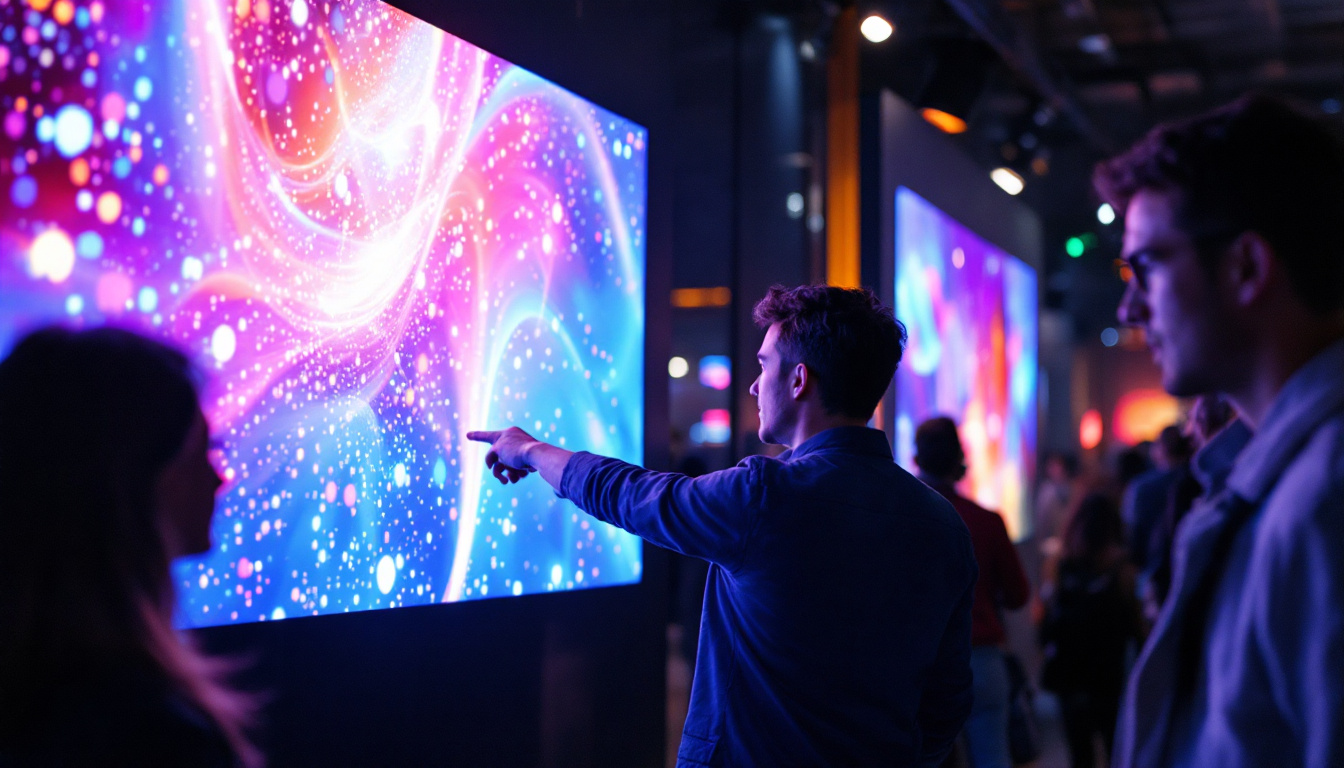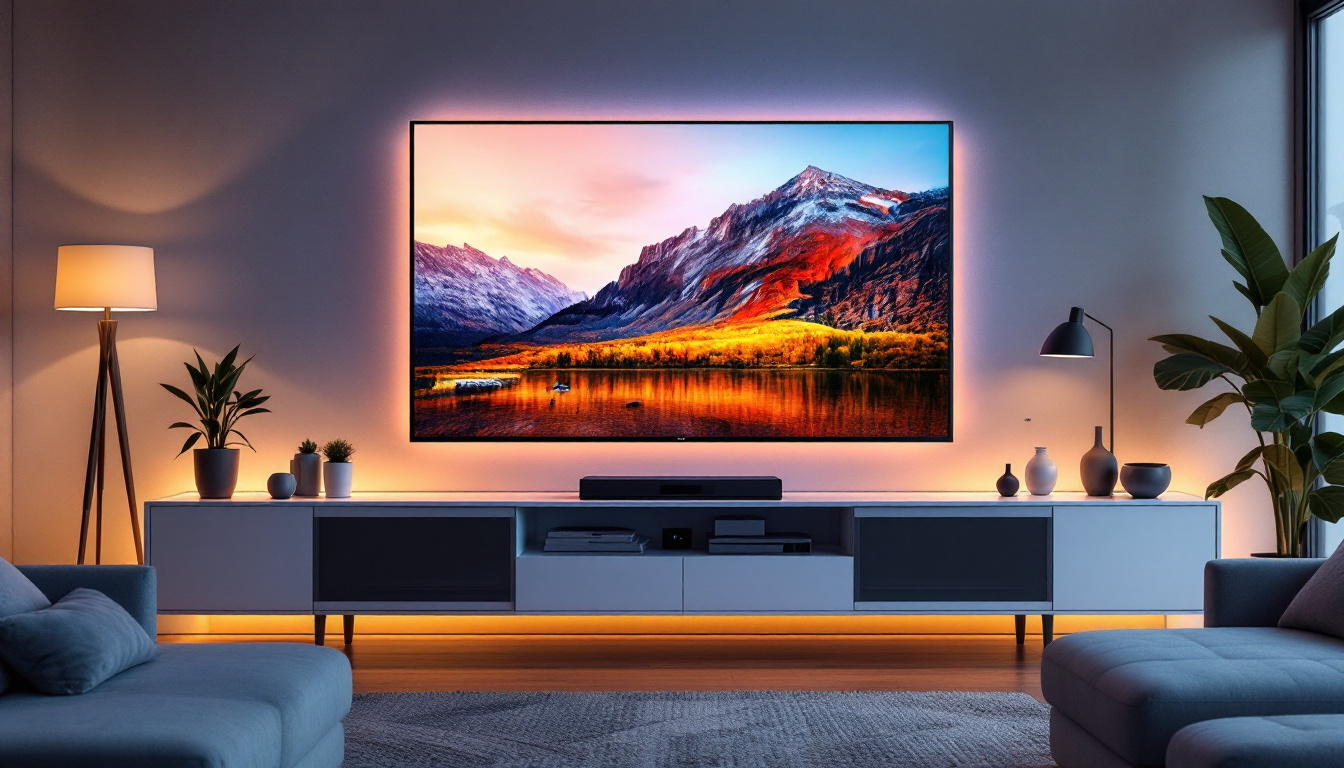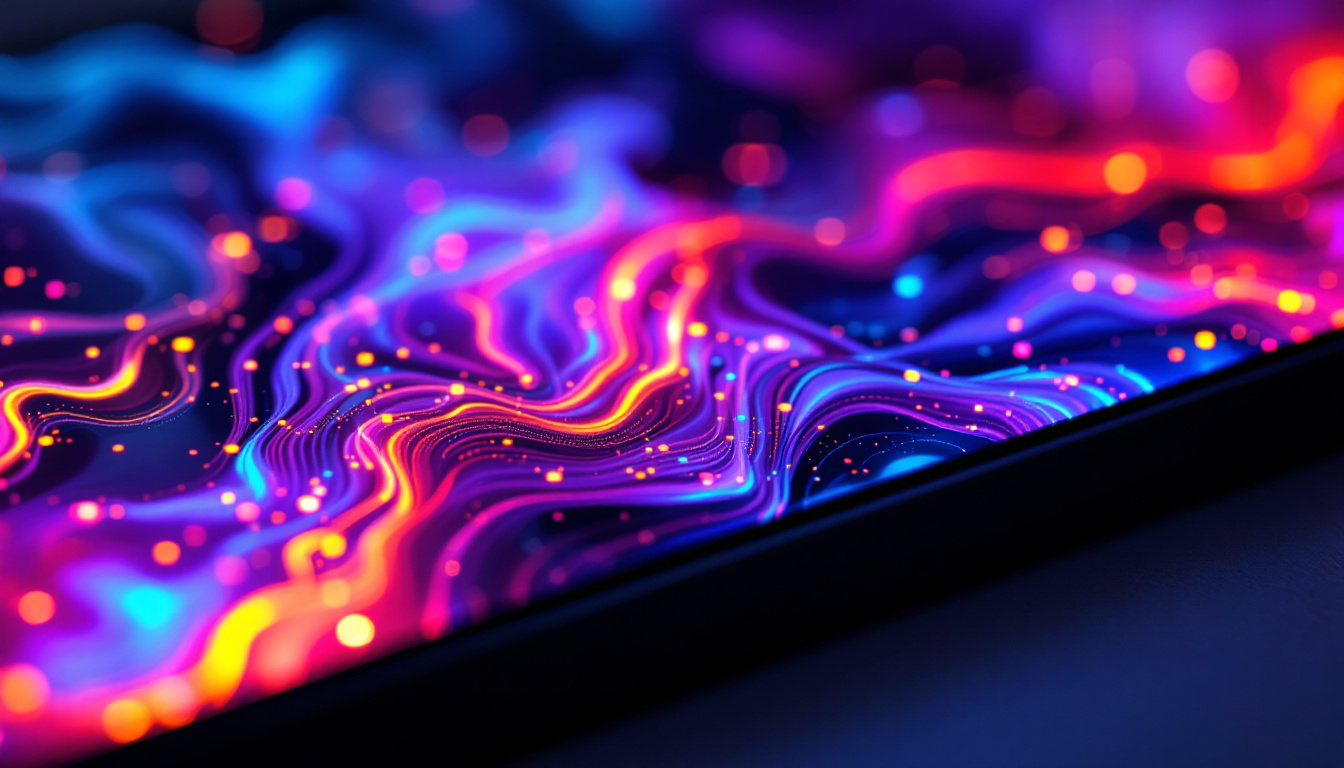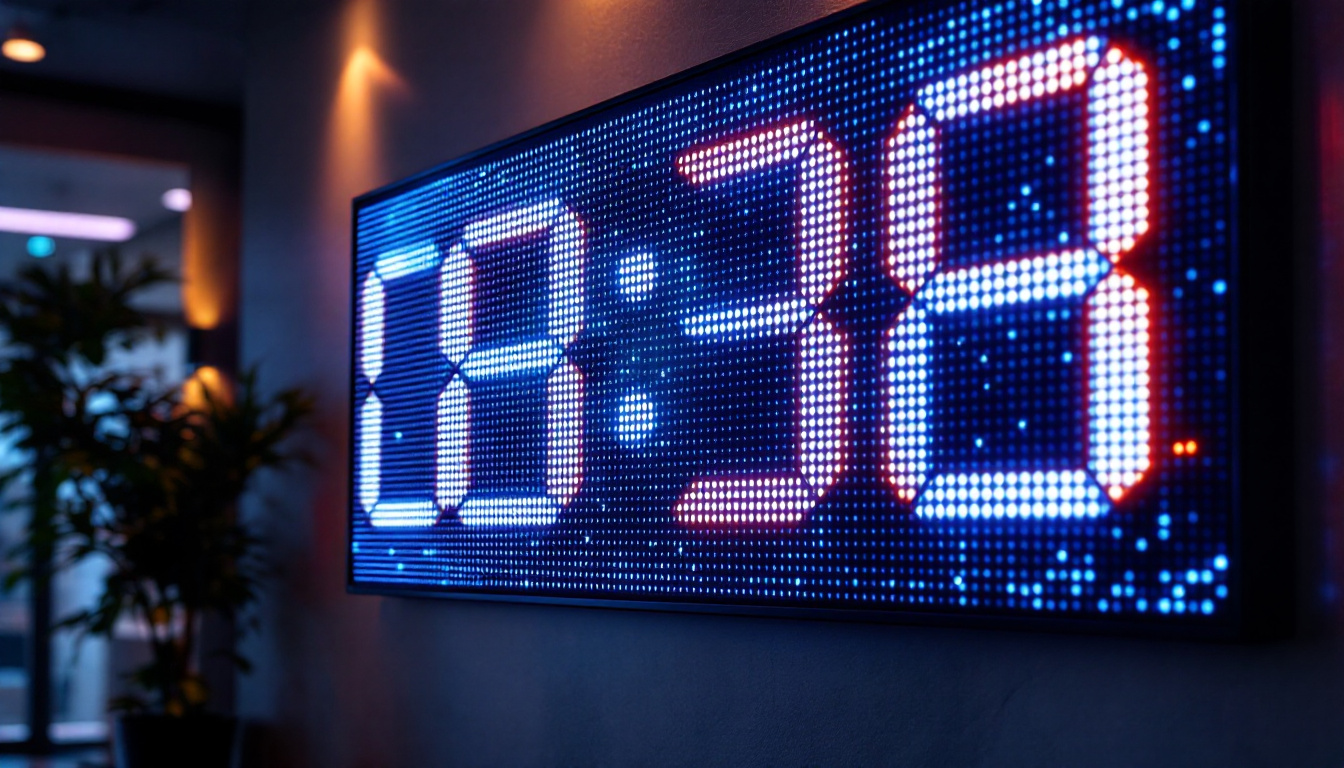In the ever-evolving world of technology, LED displays have emerged as a transformative force in various industries. From advertising to entertainment, their versatility and efficiency have made them a popular choice for businesses and consumers alike. This article delves into the intricacies of LED displays, exploring their technology, applications, and the benefits they bring to the table.
Understanding LED Technology
LED, or Light Emitting Diode, is a semiconductor device that emits light when an electric current passes through it. This technology has revolutionized the way we think about lighting and displays. Unlike traditional incandescent bulbs, LEDs are more energy-efficient, longer-lasting, and capable of producing a wider range of colors. Their compact size and versatility have made them a popular choice in various applications, from household lighting to intricate architectural designs.
Moreover, the environmental impact of switching to LED technology cannot be overstated. By consuming significantly less energy than their incandescent counterparts, LEDs contribute to reduced greenhouse gas emissions and lower electricity bills. This shift towards energy-efficient lighting is a crucial step in combating climate change, making LEDs not just a smart choice for consumers but also a responsible one for the planet.
The Science Behind LEDs
At the core of LED technology is the principle of electroluminescence. When electrons move through a semiconductor material, they release energy in the form of photons, which is perceived as light. The color of the light emitted depends on the materials used in the semiconductor. For instance, gallium nitride produces blue light, while gallium phosphide can emit green. This intricate process involves carefully engineered materials that allow for precise control over the light output, making LEDs highly customizable for various applications.
This fundamental science allows for the creation of various types of LED displays, including full-color screens that combine red, green, and blue (RGB) LEDs to produce a wide spectrum of colors. The ability to mix these colors at different intensities enables the display of vibrant images and videos. Additionally, advancements in technology have led to the development of smart LEDs, which can be controlled remotely and programmed for specific lighting effects, further enhancing their functionality in modern applications.
Types of LED Displays
LED displays come in various forms, each designed for specific applications. The most common types include:
- Direct View LED Displays: These are made up of individual LED modules that can be assembled to create large screens. They are widely used for outdoor advertising and large events, providing bright, eye-catching visuals that can be seen from great distances.
- LED Backlit Displays: Found in televisions and computer monitors, these displays use LEDs to backlight an LCD panel, enhancing brightness and color accuracy. This technology has greatly improved the viewing experience, allowing for thinner screens and better energy efficiency.
- Organic LED (OLED) Displays: Utilizing organic compounds, OLEDs offer superior contrast and color reproduction, making them popular in high-end televisions and smartphones. Their ability to achieve true blacks by turning off individual pixels has set a new standard for display quality.
In addition to these common types, there are also specialized LED displays, such as those used in automotive lighting and signage. For example, LED matrix displays can be programmed to show dynamic messages, making them ideal for traffic signs and advertising boards. The versatility of LED technology continues to expand, leading to innovative applications in fields such as healthcare, where LED lighting is used in surgical suites for its bright, clear illumination and reduced heat output.
Applications of LED Displays
The versatility of LED displays has led to their adoption across various sectors. Here are some notable applications:
Advertising and Marketing
One of the most prominent uses of LED displays is in advertising. Billboards and digital signage have transformed the way brands communicate with consumers. The ability to display dynamic content, such as videos and animations, captures attention more effectively than static images.
Furthermore, LED displays can be programmed to change content based on time, location, or audience demographics, allowing for targeted marketing strategies that enhance engagement and conversion rates. This capability enables businesses to tailor their messages to specific audiences, maximizing the impact of their advertising campaigns. For instance, a coffee shop might display a morning special on its LED board during rush hour, while a clothing store might showcase seasonal promotions in the evening when foot traffic is higher.
Entertainment and Events
In the entertainment industry, LED displays play a crucial role in concerts, sporting events, and theatrical performances. Large LED screens are used to provide visuals that enhance the audience’s experience, displaying live feeds, graphics, and special effects.
Moreover, the flexibility of LED technology allows for creative stage designs, where screens can be shaped and configured in various ways to create immersive environments. This adaptability has made LED displays a staple in modern event production. For example, at music festivals, LED walls can be arranged in intricate patterns to create a visually stunning backdrop that complements the performance, while also allowing for interactive elements that engage the audience. These displays can even be synchronized with the music, creating a cohesive sensory experience that captivates attendees.
Transportation and Public Information
LED displays are increasingly used in public transportation systems to provide real-time information to passengers. Buses, trains, and airports utilize LED screens to display arrival and departure times, service updates, and safety information. The bright visibility of LEDs ensures that information is easily readable, even in bright sunlight.
Additionally, LED displays are employed in traffic management systems, where they can convey important messages to drivers, such as speed limits, road conditions, and alerts about accidents. This application not only enhances safety but also improves traffic flow. In urban areas, LED displays can also be used to inform citizens about local events, public service announcements, and emergency alerts, fostering a sense of community and keeping residents informed. As cities continue to embrace smart technology, the integration of LED displays into urban infrastructure is expected to grow, further enhancing communication and safety for all road users.
Benefits of LED Displays
The advantages of LED displays extend beyond their visual appeal. Here are some key benefits that make them a preferred choice across various applications:
Energy Efficiency
One of the standout features of LED technology is its energy efficiency. Compared to traditional lighting solutions, LEDs consume significantly less power, which translates to lower electricity bills. This efficiency not only benefits businesses financially but also contributes to a reduction in carbon emissions, making them an environmentally friendly option.
Longevity and Durability
LED displays are designed to last. With a lifespan of up to 100,000 hours, they outlast traditional bulbs by a significant margin. This longevity reduces the need for frequent replacements, which can be both costly and inconvenient. Moreover, LEDs are more resistant to shock and vibration, making them suitable for various environments, including outdoor settings.
High-Quality Visuals
LED displays offer superior image quality, characterized by high brightness, contrast, and color accuracy. This capability ensures that content is vibrant and engaging, whether viewed in daylight or low-light conditions. The ability to adjust brightness levels also allows for optimal viewing experiences in different environments.
Challenges and Considerations
While LED displays offer numerous benefits, there are also challenges and considerations that must be addressed. Understanding these factors is essential for making informed decisions regarding their use.
Initial Costs
The initial investment for LED displays can be higher than that of traditional display technologies. However, when considering the long-term savings on energy and maintenance, many find that the upfront costs are justified. Businesses must weigh these factors carefully to determine the best solution for their needs.
Heat Management
LEDs generate heat during operation, which can affect performance and longevity if not managed properly. Adequate heat dissipation mechanisms, such as heatsinks and fans, are essential to ensure that the displays operate efficiently and maintain their lifespan. This consideration is particularly important in large-scale installations where heat buildup can be significant.
Viewing Angles and Distance
While LED displays are known for their brightness and clarity, the viewing angle can vary depending on the type of display. Some LED screens may have limited viewing angles, which can affect how content is perceived from different positions. It’s crucial to select the right type of LED display based on the intended viewing distance and angle to ensure optimal visibility for the audience.
Future Trends in LED Display Technology
The LED display industry is continuously evolving, with advancements in technology paving the way for exciting innovations. Here are some trends to watch for in the coming years:
MicroLED Technology
MicroLED is an emerging technology that promises to revolutionize display quality. Composed of tiny individual LEDs, MicroLED displays offer higher resolution, better color accuracy, and improved energy efficiency. This technology has the potential to replace OLED displays in high-end applications, providing a superior viewing experience.
Flexible and Transparent Displays
As demand for creative and versatile display solutions grows, manufacturers are developing flexible and transparent LED displays. These innovations allow for unique applications, such as curved screens and displays integrated into windows or walls. Such flexibility opens up new possibilities for advertising, architecture, and design.
Smart Integration
The integration of smart technology into LED displays is on the rise. With the advent of the Internet of Things (IoT), LED displays can now be connected to networks, allowing for real-time content updates and remote management. This connectivity enhances the functionality of displays, making them more interactive and responsive to audience needs.
Conclusion
LED displays have become an integral part of modern life, enhancing communication, entertainment, and information dissemination across various sectors. Their energy efficiency, longevity, and high-quality visuals make them a preferred choice for businesses and consumers alike.
As technology continues to advance, the future of LED displays looks promising, with innovations such as MicroLED, flexible displays, and smart integration set to redefine how we interact with visual content. By understanding the benefits and challenges associated with LED technology, businesses can make informed decisions that align with their goals and enhance their overall effectiveness.
In a world where visual communication is paramount, embracing LED display technology is not just a trend but a strategic move towards a brighter, more efficient future.
Illuminate Your World with LumenMatrix
As you consider the future of visual communication and the role LED displays play in it, LumenMatrix stands at the forefront of this technological revolution. Our extensive range of innovative LED display solutions, including Indoor and Outdoor LED Wall Displays, Vehicle LED Displays, LED Poster Displays, LED Sports Displays, Floor LED Displays, Custom LED Displays, All-in-One LED Displays, and LED Transparent Displays, are designed to elevate your brand’s visibility and captivate your audience. Embrace the power of cutting-edge LED technology with LumenMatrix and transform the way you share your message. Check out LumenMatrix LED Display Solutions today and step into a brighter, more engaging future.

